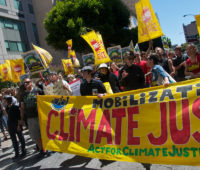Samar Al-Bulushi marks the twentieth anniversary of the bombings of the US embassies in Kenya and Tanzania with a reflection on their legacy for the securitization of much of the African continent. Based on extensive field research in Kenya (supported by SSRC’s Dissertation Proposal Development and International Dissertation Research Fellowships), she analyzes the extension of American and European military presences in the region, the Kenyan military’s role in Somalia, and the ways in which police forces target Muslim citizens under the banner of antiterrorism. Even aid agencies and civil society organizations, Al-Bulushi argues, contribute to the discourse and practice of “countering violent extremism” with serious consequences.





























